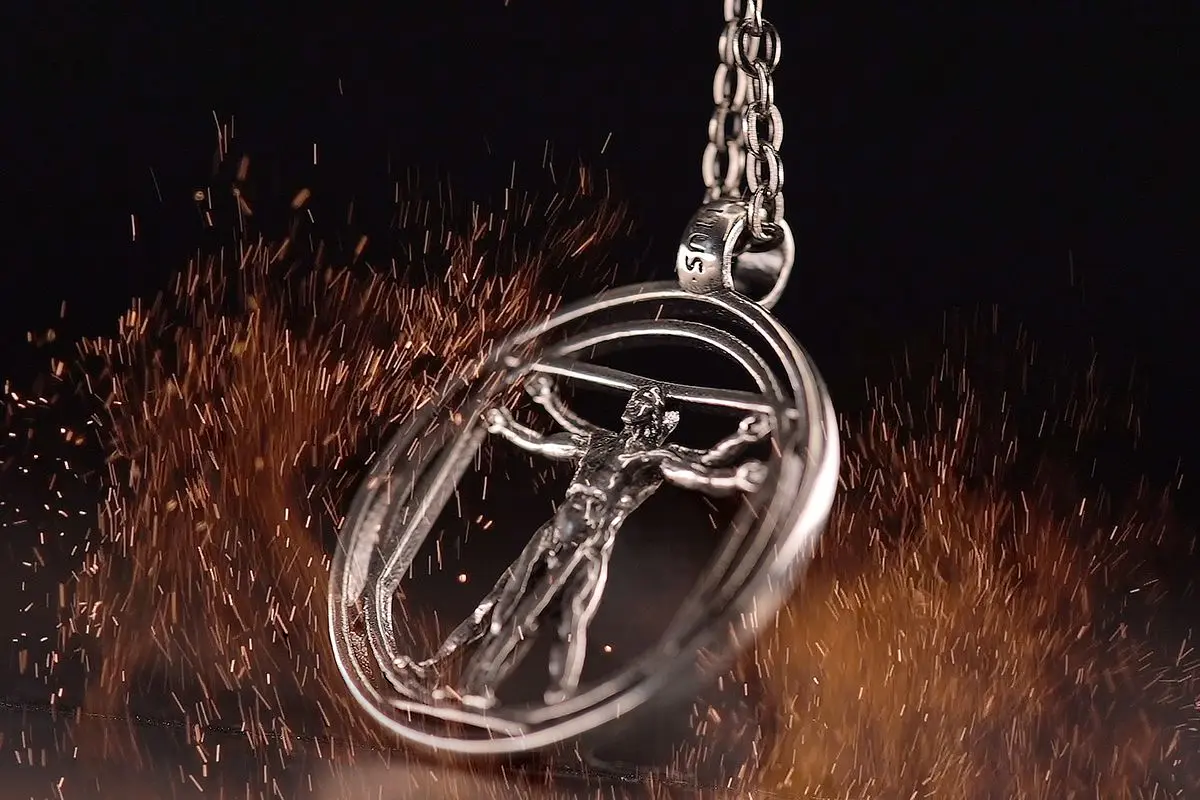It is one of the symbols of the collection inspired by mythology: what does the Vitruvian man represent and why has this drawing by Leonardo retained its fascination for centuries?
Few people know that, although it has become an icon of the master Da Vinci’s work, to understand what the Vitruvian man represents we have to go much further back, to Roman history. In the meanders of the 1st century B.C. lies the man who gave birth to the myth. He is Marcus Vitruvius Pollonius.
This famous architect of ancient Rome first outlined in his De architectura, a work in ten books on the art he mastered, the principles of order, harmony and proportion that would guide Leonardo and many other artists centuries later.
Why it is called “Vitruvian Man”: the origins of Leonardo’s drawing
Above the Renaissance master’s sketch is the meaning of the Vitruvian Man. A few lines by Leonardo explain exactly what the Vitruvian man represents and what inspired his figure of perfect proportions. The lines refer precisely to the treatise by Marcus Vitruvius Pollonius, in particular to the third book dedicated to the construction of temples.
It is no coincidence that the idea of perfection and harmony arises precisely in relation to places of worship: it is in approaching God, the gods or any higher power that the artist seeks perfection. And it is in the man of perfect proportions that first Vitruvius and later Leonardo found the representation of the divine on earth.
Borrowing the Roman architect’s definitions and measurements, in fact, Leonardo Da Vinci enclosed his perfect man – the Vitruvian man, precisely – in a circle and a square. As well as acting as guidelines for the design of the ideal limbs, these two geometric figures ideally represent Heaven and Earth. The human and the divine coming together, one mirroring the other.
Vitruvian man what he represents – artistic and philosophical meanings
“Without symmetry and without proportion no temple can exist that is endowed with good composition”, writes Vitruvius according to one of the many translations from Latin in the third book of De architectura, “and the same is true of the exact harmony of the limbs of a well-proportioned man“.
The Roman architect then proceeds to identify what this exact harmony is, faithfully reproduced by Leonardo in his Vitruvian man. A drawing that has entered the history of art by right as an example of ideal proportions to aspire to in works of art. But it is not only the beauty of the human form that is the solution to the intrigue represented by these pencil strokes.
In that perfect and beautiful man, Leonardo found the traces of divinity on Earth, and consequently the way to represent the divine and the human in art. The Christian reading of the ‘microcosm’, accepted and celebrated by many Renaissance artists, sees in man the reflection of a higher order and in his ideal proportions the lines that govern the Cosmos in its entirety.
Vitruvian man in Ellius jewellery
A symbol of beauty, harmony and the intersection of the human and the divine, the Vitruvian man could not but become an icon for the Ellius Vitruvian Man collection. Its perfect lines and harmonious proportions make it the starting point for any art form that aspires to formal beauty.
At the same time, the meeting point of art, philosophy, history and spirituality has a very strong appeal for Ellius, which wants to tell the story of the arts with its jewellery. The beauty of human creations, which in itself possesses a spark of divinity, inspires charms and bracelets with the same aspiration.
The divine beauty is transmitted in all creatures and particularly in man, made in the image and likeness of God. The perfection that governs the Cosmos finds its counterpart in the perfection that guides the hand of the artist. Finally, art, an inexhaustible source of awe and wonder, becomes for Ellius jewellery the inspiration for the microcosm present in the few millimetres of a medallion. This is what the Vitruvian man represents: wearing the symbol of universal harmony around the neck is a continuous retracing of the steps of history, art and human spirituality.

